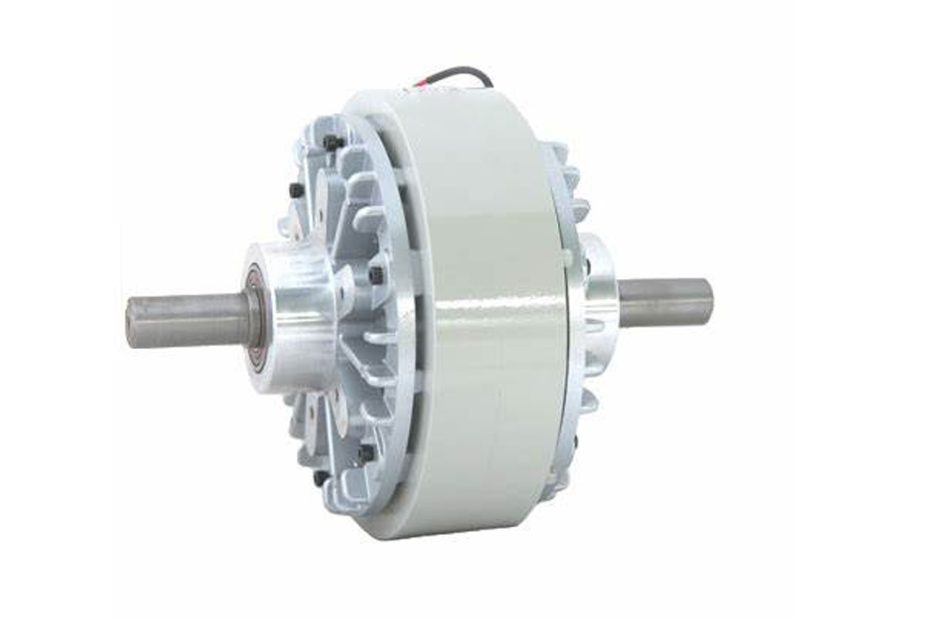In the realm of industrial machinery, the efficiency and control of rotating elements are paramount. One essential component that plays a crucial role in achieving precision is the magnetic Particle brake. This article
Magnetic Particle brakes operate on the principles of magnetism and friction. When engaged, these brakes utilize magnetic fields to generate resistance by transmitting torque through a powder-filled chamber. This controlled friction allows for precise speed and tension regulation in various industrial applications.
Characteristics Of Magnetic Particle Brakes
- Precise Torque Control : Magnetic Particle brakes excel in providing precise torque control. Their ability to modulate torque levels with accuracy makes them indispensable in applications where maintaining a specific tension or speed is critical.
- Heat Dissipation Efficiency : The design of magnetic Particle brakes facilitates efficient heat dissipation, preventing overheating during prolonged operation. This characteristic ensures longevity and reliability in demanding industrial environments.
- Responsive Performance : With a rapid response time, magnetic particle brakes can swiftly adjust torque levels. This responsiveness is crucial in applications where sudden changes in tension or speed are common, such as in web processing or material handling.
Fast Response: The Engineering Marvel
- Magnetic Field Dynamics : The fast response of magnetic particle brakes is rooted in the dynamic nature of magnetic fields. When an electric current is applied, the magnetic particles in the powder align rapidly, creating instant resistance. This swift response allows for real-time adjustments, making magnetic particle brakes ideal for applications requiring rapid changes in torque or speed.
- Minimal Mechanical Lag : Unlike traditional mechanical braking systems, magnetic particle brakes operate without the need for physical contact. This absence of frictional components contributes to their rapid response, eliminating mechanical lag that can be inherent in other braking mechanisms.
Simple Structure: Efficiency in Simplicity
- Powder-Filled Chamber Design : The simplicity of the magnetic particle brake’s structure lies in its design. A powder-filled chamber, often sealed to prevent external contaminants, is a hallmark feature. This uncomplicated structure contributes to ease of maintenance and reliability.
- Electromagnetic Core : At the heart of the simplicity is the electromagnetic core. The core, often consisting of a coil and a magnetic circuit, operates seamlessly, ensuring a straightforward yet effective mechanism for torque control. Careful selection of materials for the core enhances its durability and efficiency. The use of high-quality materials minimizes wear and tear, contributing to the overall longevity of the magnetic particle brake.
No Noise: Silence in Operation
- Frictionless Operation : One of the primary reasons for the absence of noise in magnetic particle brakes is their frictionless operation. Traditional braking systems, relying on physical contact between components, often produce noise due to friction and wear. In contrast, the magnetic particle brake operates smoothly without generating unwanted sounds.
- Vibration-Free Torque Control : The magnetic particle brake’s ability to exert torque without the need for physical contact extends to vibration-free operation. This characteristic is particularly advantageous in applications where vibration can adversely affect precision and product quality.
No Impact and Vibration: Engineering Harmony
- Torque Transmission Mechanism : The absence of impact and vibration in magnetic particle brakes can be attributed to their unique torque transmission mechanism. Instead of relying on mechanical components that can cause impact and vibration, these brakes utilize the controlled interaction of magnetic particles in the powder-filled chamber.
- Damping Effect : The damping effect, inherent in the magnetic particle brake’s design, further contributes to the elimination of impact and vibration. This controlled dissipation of energy ensures smooth and precise operation, minimizing any adverse effects on the surrounding machinery.

Three Selection Requirements For Magnetic Particle Brakes
1. Application-Specific Torque Ratings
Selecting the appropriate torque rating is paramount for optimal performance. Understanding the torque requirements of the specific application ensures that the magnetic particle brake operates within its designated range, preventing underperformance or potential damage.
2. Environmental Considerations
- Temperature Sensitivity : Consideration of the operating environment’s temperature is crucial. In high-temperature settings, opting for a wet magnetic particle brake may be advantageous due to its enhanced heat dissipation capabilities.
- Cleanliness Requirements : For applications demanding a clean and dust-free environment, a sealed dry magnetic particle brake is the preferred choice. This minimizes the risk of contaminants affecting the brake’s performance.
3. Space Constraints
The physical dimensions of the magnetic particle brake must align with the available space in the machinery. Compact designs are available for applications with limited space, ensuring seamless integration without compromising performance.
Comparative Analysis of Magnetic Particle Brake Types
| Characteristic | Dry Magnetic particle Brake | Wet Magnetic particle Brake |
|---|---|---|
| Torque Range | Wide range | High torque applications |
| Heat Dissipation | Moderate | Excellent |
| Maintenance Requirements | Low | Moderate |
| Environmental Suitability | Clean environments | High-temperature settings |
| Application Suitability | Printing, packaging | Metal forming, heavy-duty |
Conclusion
The utilization of machine-mounted magnetic particle brakes brings unparalleled precision and control to industrial processes. Understanding the characteristics and selection requirements is pivotal for ensuring optimal performance in diverse applications.
Whether it’s the need for precise torque control, efficient heat dissipation, or responsiveness, magnetic particle brakes stand as a reliable solution in the intricate web of industrial machinery. By considering torque ratings, environmental factors, and space constraints, industries can harness the full potential of these brakes, unlocking a new era of efficiency and reliability.
The characteristics of fast response, simple structure, no noise, and no impact and vibration in magnetic particle brakes are not mere coincidences but deliberate engineering choices.From the rapid response driven by magnetic field dynamics to the simplicity of the powder-filled chamber design, each feature plays a crucial role in shaping the performance of these brakes. The absence of noise, impact, and vibration adds another layer of appeal, making magnetic particle brakes the silent champions of precision and efficiency in the realm of industrial machinery.
